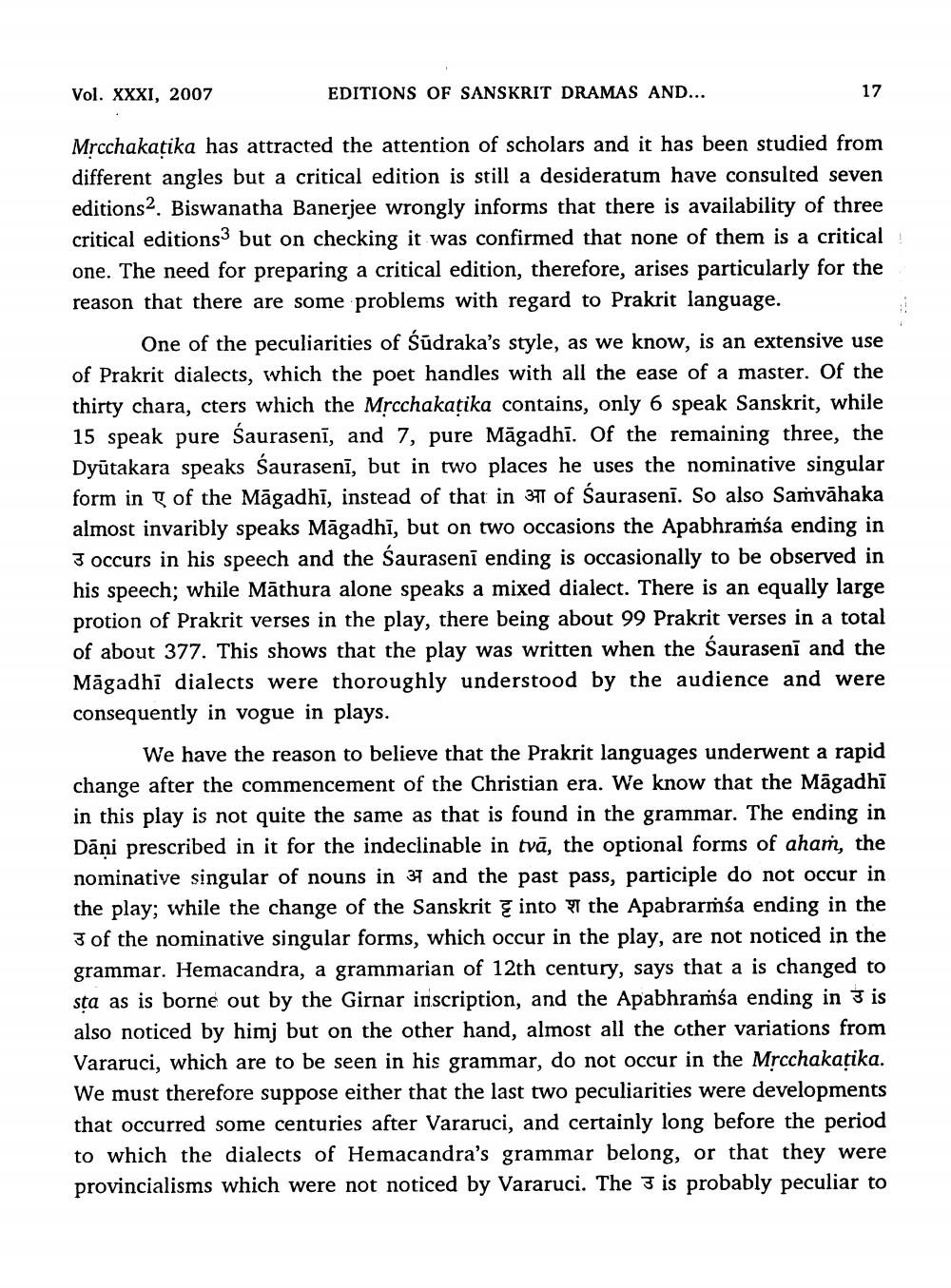________________
Vol. XXXI, 2007
EDITIONS OF SANSKRIT DRAMAS AND...
17
Mrcchakatika has attracted the attention of scholars and it has been studied from different angles but a critical edition is still a desideratum have consulted seven editions2. Biswanatha Banerjee wrongly informs that there is availability of three critical editions3 but on checking it was confirmed that none of them is a critical one. The need for preparing a critical edition, therefore, arises particularly for the reason that there are some problems with regard to Prakrit language.
One of the peculiarities of Śūdraka's style, as we know, is an extensive use of Prakrit dialects, which the poet handles with all the ease of a master. Of the thirty chara, cters which the Mrcchakatika contains, only 6 speak Sanskrit, while 15 speak pure Saurasenī, and 7, pure Māgadhi. Of the remaining three, the Dyūtakara speaks Saurasenī, but in two places he uses the nominative singular form in T of the Māgadhī, instead of that in 371 of Sauraseni. So also Samvāhaka almost invaribly speaks Māgadhī, but on two occasions the Apabhraíśa ending in 3 occurs in his speech and the Sauraseni ending is occasionally to be observed in his speech; while Māthura alone speaks a mixed dialect. There is an equally large protion of Prakrit verses in the play, there being about 99 Prakrit verses in a total of about 377. This shows that the play was written when the saurasenī and the Māgadhi dialects were thoroughly understood by the audience and were consequently in vogue in plays.
We have the reason to believe that the Prakrit languages underwent a rapid change after the commencement of the Christian era. We know that the Māgadhi in this play is not quite the same as that is found in the grammar. The ending in Dāni prescribed in it for the indeclinable in tvā, the optional forms of aham, the nominative singular of nouns in 37 and the past pass, participle do not occur in the play; while the change of the Sanskrit & into FT the Apabrarmśa ending in the 3 of the nominative singular forms, which occur in the play, are not noticed in the grammar. Hemacandra, a grammarian of 12th century, says that a is changed to sta as is borne out by the Girnar inscription, and the Apabhramśa ending in 3 is also noticed by himj but on the other hand, almost all the other variations from Vararuci, which are to be seen in his grammar, do not occur in the Mrcchakațika. We must therefore suppose either that the last two peculiarities were developments that occurred some centuries after Vararuci, and certainly long before the period to which the dialects of Hemacandra's grammar belong, or that they were provincialisms which were not noticed by Vararuci. The 3 is probably peculiar to




